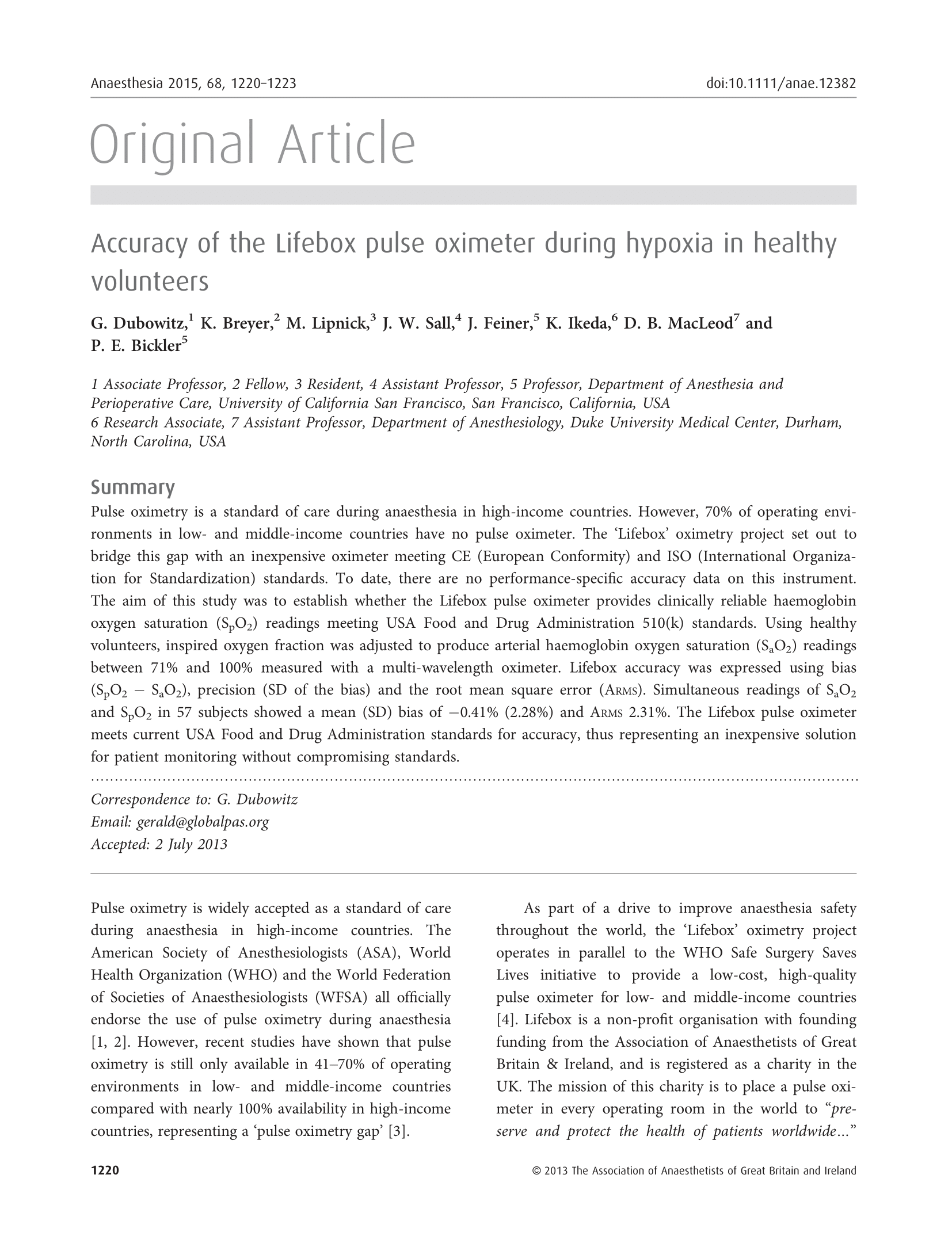
Scalability and Sustainability of a Surgical Infection Prevention Program in Low-Income Environments
Clean Cut results, published in JAMA Surgery, achieve a 34% relative risk reduction of surgical site infection
Find Lifebox resources for perioperative professionals - including publications, our online learning courses, and Lifebox workshop materials

Clean Cut results, published in JAMA Surgery, achieve a 34% relative risk reduction of surgical site infection

This study showed that Lifebox's Clean Cut program improved infection prevention standards to reduce SSI without infrastructure expenses or resource investments.

This study found that pulse oximetry was generally deemed valuable by health care providers (HCPs) for use as a spot-check device in a range of pediatric low-income clinical settings.

This study shows that patient loss to follow-up and poor documentation of infections underestimated overall infectious complications.

This study features a survey of surgeons working in low-resource settings, in which a majority report poor surgical lighting as a major risk to patient safety and nearly one-third report delayed or cancelled operations due to poor lighting.

In this study, logbook data suggest that the use of pulse oximetry reduces the incidence of peri-operative hypoxic episodes and has the potential to improve the safety of anesthesia in this setting.

This study demonstrated that pulse oximetry is a cost–effective intervention for low-income settings.

This study indicates that pulse oximetry is widely accepted as essential monitoring for safe anesthesia, yet is frequently unavailable in resource-limited settings.

This study shows that the Lifebox pulse oximeter detects hypoxia in healthy volunteers at a degree of accuracy and bias that is comparable to FDA-approved pulse oximeters made by major manufacturers.

This study showed the estimated number of operating theatres ranged from 1·0 (95% CI 0·9–1·2) per 100 000 people in west sub-Saharan Africa to 25·1 (20·9–30·1) per 100 000 in eastern Europe.

